Motherboards
Motherboards? What on earth do motherboards have to do with PPUs, you might quite reasonably ask? The answer is simple: available PCI slots. Let us explain. There is no doubting AGEIA are targeting well-heeled, early adopting gamers. These same gamers are the type who are also the primary customers for ATI CrossFire or NVIDIA SLI multi-GPU platforms. If you follow this logic through to the end, these are also the guys who eschew on-board sound in favour of a Creative X-Fi soundcard. With me so far?For most gamers, the currently PCI-only PhysX card is in a two horse race for a PCI slot with that X-Fi soundcard . No problem, you say - every full-size ATX board comes with two PCI slots, and some have three. Right? Well, while this is technically true, you have to consider the fact that on any high-end system, the graphics cards have dual-slot coolers. These copper and aluminium behemoths block whichever slot is adjacent to them with impunity.
We polled every dual-graphics motherboard we have reviewed in the past twelve months and a whopping 60% have only one free PCI slot when either a pair of GeForce 7900 GTX or Radeon X1900XTX cards are installed. Before you think this is an issue limited to the low-end models, consider for a minute that Alienware is PhysX launch partner, yet spend £4000 on an Aurora 7500 and specify dual NVIDIA graphics and you will be prevented from speccing a PPU as well. Curiously, Alienware's US branch appear to use a different motherboard, since we have seen its PPU-enabled system.
So which boards can handle X-Fi plus PPU and which can't? Let's take a look at the market:
ATI CrossFire
These two boards clearly demonstrate the problem of fitting a PPU as well as an X-Fi into a system with two dual-slot graphics cards. On the MSI RD480 Neo2 we reviewed in January, while MSI have left enough space next to the primary x16 PCI Express slot to avoid obscuring anything, the second Radeon X1800 / X1900 card would clearly block PCI1, leaving just one free. The ABIT AT8 32X suffers the same problem.There may not be a huge number of boards to choose from, but luckily, there are some CrossFire boards that avoid this headache. The DFI LANParty UT CFX3200-DR is our current favourite, for many reasons, and it just so happens that it has three PCI slots south of the second PCI-Express x16 slot. PCI1 is still blocked but you can happily fit a PhysX PPU alongside your X-Fi.
The ASUS A8R32-MVP Deluxe also features three PCI slots, though one is sandwiched between both x16 slots. In any case, you will still have two free with your graphics cards in place, though the potential of this sandwiching is what forced BFG Tech to actively cool their PPU card. On paper, it could sport a passive heatsink but in reality, there is a high chance it will have a GeForce 7900 GTX or Radeon X1900XTX warming it up.
NVIDIA SLI
NVIDIA may have a greater range of motherboards on the market, but that just means a larger list of boards that won't be suitable for our top-spec gamer. The ABIT AN8-SLI has an identical two-PCI slot layout to the AT8 32X CrossFire board, and is dismissed for the same reasons. The ASUS A8N32-SLI Deluxe proves that merely having three PCI slots over two doesn't guarantee success - only the middle of three is free with a pair of GeForce 7900 GTXs in situ. Another popular board among enthusiasts is the excellent DFI LANParty nF4 SLI-DR - it's bad news for that board too.It's not all doom & gloom: the ASUS A8N-SLI and MSI K8N Diamond boards show it can be done.
Additional comments
There are numerous solutions to this conumdrum. If you're buying components tomorrow, the obvious answer is to opt for one of the motherboards which offers two-free PCI slots with the graphics cards in place. If you choose one that doesn't, or perhaps you have already bought your board.The next obvious step would be to use a PPU in place of a dedicated soundcard and use on-board sound. To be honest, if this option doesn't make you wince instantly, then you're probably not the sort of person who will pay £100 for an add-in soundcard these days. On-board audio is certainly better than it used to be, so you may choose physics over the latest version of Creative's EAX technology.
The only other solution - in a dual-graphics system - is to avoid dual-slot coolers. For ATI fans, the news is not good. Radeon X1800 CrossFire, as well as both X1900XT and X1900XTX cards use dual-slot coolers. It's possible to use Radeon X1800XL in CrossFire, but the performance just doesn't warrant the investment.
NVIDIA zealots have a wider choice, as there are only two cards that are dual-slot: the rare GeForce 7800 GTX 512 and the current king, GeForce 7900 GTX. Everything else from the GeForce 7-series has a single-slot cooler and thus won't block any PCI slots.
Of course, use any SLI or CrossFire board with just a single GPU and you're covered. In fact, any motherboard designed for only one graphics card will also accomodate a PhysX PPU and an X-Fi, assuming you don't have it loaded with a TV-card, add-in RAID card and the like.
In the future, we expect to see a PCI-Express version of the PhysX card - early beta hardware actually featured a PCI connector on one edge and a PCI-Express on the opposite edge. Indeed, one can always imagine that Creative will move X-Fi (or a future soundcard) to PCI-Express too. That might well create another fight - this time over available PCI-Express slots - though at some point we expect motherboard manufacturers to drop regular PCI completely.

MSI MPG Velox 100R Chassis Review
October 14 2021 | 15:04


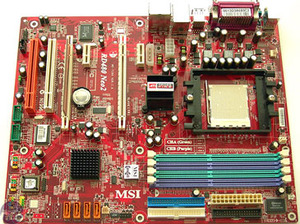


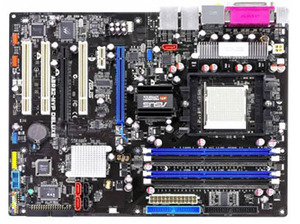
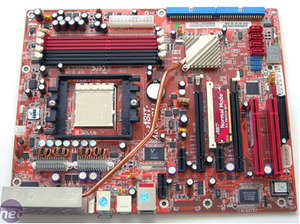
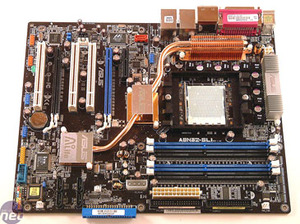
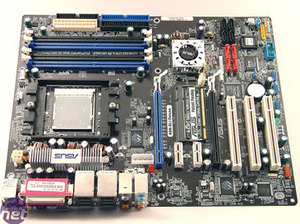
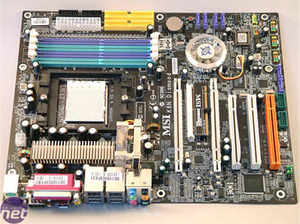







Want to comment? Please log in.